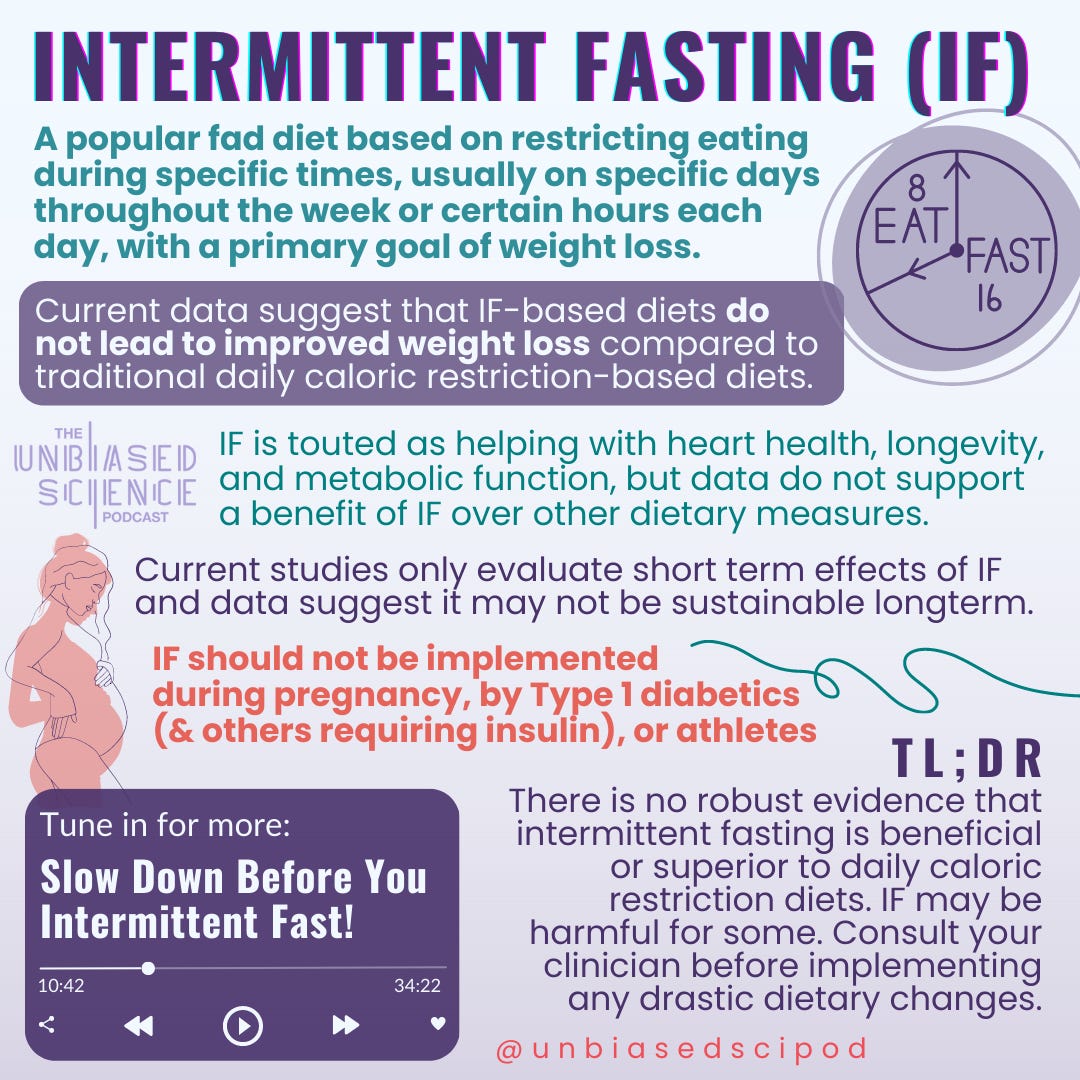The Dose: No Need To Fear The Kraken
The Kraken Variant, Intermittent Fasting, & Follow A Rain Drop
Despite being given a nickname that induces fear, the new variant of SARS-CoV-2 does not seem to induce more severe illness. However, XBB.1.5 is more transmissible, so it’s important to make sure you and your loved ones are up to date on your booster shots. Read more here.
Have you listened to our latest episode of the pod? Slow Down Before You Intermittent Fast! We had on a guest to discuss intermittent fasting and what the data say. There are tons of claims touting the benefit of IF, but not much evidence to support those claims.
Have a few extra minutes to spare? Check out this incredible site, which lets you follow the path of a raindrop from anywhere in the world. You’ll select where it starts, and then follow the path to see where it ends.
Good news for anyone with a sesame allergy! The FDA has added sesame to its list of major allergens, meaning FDA regulated foods are now required to be labeled as containing sesame, no matter how the ingredient is used. Prior to this, sesame only had to be listed if it was used as a whole ingredient (versus as a flavoring or spice).
It’s unlikely to have an impact and there are some fierce debates as to whether or not the research is accurate, but scientists in Beijing have claimed that the Earth’s inner core may have reversed its rotation. Read more here.
Scientists have proposed that Earth’s solid inner core (yellow in this diagram) rotates faster than the rest of Earth. A new study suggests the core’s rotation has recently paused, and is reversing direction.
FPM/E+/GETTY IMAGES PLUS
Intern Spotlight: Nicholas, Research & Content Team
Tell us a little bit about yourself? Where do you live? Where do you work/attend school, and what do you do/major in?
I am currently living in Maryland, where I am in my second year working as a research trainee at the NIH as part of their postbaccalaureate training program. My first year was spent in the NIH Clinical Center, where I studied rare fungal pathogens using previously-stored samples from patients. I am currently working in the National Cancer Institute, where I help with the lab’s overall studies into the microbiome’s effects on immune responses to cancer therapies. I am doing this while applying to medical school, and hope to be moving onto that this fall.
What are your hobbies/interests outside of school/work?
I spend a lot of time singing in the Choral Arts Society of Washington. I get to sing in places like the Kennedy Center in DC and the National Cathedral, which has been great, and our repertoire is always engaging and wonderful to perform. I also enjoy playing the guitar and writing songs. Aside from music, I regularly play Dungeons & Dragons with friends, and I always like a nice bike ride in a park.
What’s your favorite health/science topic and why?
I am always intrigued by the interactions between pathogens and people. The interplay between our immune system and the various things that try to infect us always fascinates me. It almost seems like a never-ending arms race of pathogens trying to manipulate or go unnoticed by our immune system, and that has kept my attention since my first exposure to microbiology.
What’s your favorite Unbiased Science podcast episode or infographic, and why?
I really appreciated the podcast episode on probiotics (“Do You Need Probiotics? Trust Your Gut.”), as it was especially hard before I started working in a lab studying the microbiome to understand all of the factors involved in whether or not probiotics are beneficial. The podcast pointed out what current scientific literature says about probiotics, both in general and in specific cases that may call for their use. It also helped me to give evidence-based information to family members who had a lingering interest in probiotics for their purported health benefits.
What’s your favorite scientific discovery or invention, and why?
The use of bacteria and fungi as bioreactors to produce insulin truly captures my heart. It’s deceptively simple as an idea, yet so complicated and involved in its execution. It is seemingly low-tech and high-tech at the same time. Using some of the most abundant organisms on earth to make a life-saving substance for us with their own processes, which we’ve achieved through genetic engineering, embodies ingenuity to me.
That’s it for this issue!
If you’re new here, we’d love to have you as a subscriber. And if you’re not new, we’d love for you to share The Dose with your friends, family, and colleagues!









